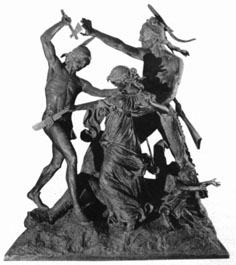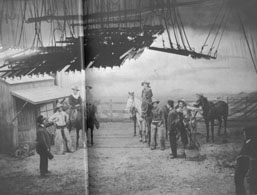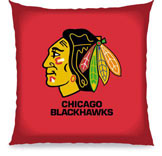<Reprinted
from Chicago
History, Spring 2004>
Genuine
Great Lakes Indians still lived just a few hundred miles north
of Chicago in Michigan and Wisconsin. Traditional
Indian birch bark crafts and quillwork became popular with summer
vacationers at Mackinac, Charlevoix, and other northern resorts.
Native Americans also lived in the city itself. While McCutcheon
warmed readers' hearts with his cartoons, Dr. Carlos Montezuma, outspoken
critic of the Bureau of Indian Affairs, edited a national publication
for Indians from his Chicago office. But by the early twentieth century,
actual Native Americans ceased to register with a public engaged
with what had become a popular culture icon. The Indian had gone
from being the "vanishing American" to becoming an effective
symbol for all of America. In multiethnic cities such as Chicago,
the Indian symbolized a common, mythic past for all Americans, regardless
of national origin. The Indian, by being portrayed as having no particular
living heritage, could serve as America's common heritage.
American
popular culture promoted a generic Indian, locked in time
and space. From 1910 to 1918, Chicago's Essanay Studios
helped to pioneer the film industry by producing scores of
westerns. Central to the generic Indian image were the Plains
Indians' feathered headdresses, the very icon used to decorate
the entrance to Essanay's North Side studio. The University
of Illinois football team, led by Red Grange, adopted the name
the "Fighting Illini," thereby blending the heritage
of a local Indian tribe with a mascot sporting a Plains costume.
|
|
Chicago's
own Essanay Studios, established in 1907, produced
many movies that popularized the "cowboys-and-Indians"
myth, especially the "Broncho Bill" western
series (above) |
|
|
|
For many
Chicagoans, Black Hawk is little more than a disembodied
head on a hockey jersey.
Follow this link to learn more about him.
|
|
The
Eternal Light Christian Spiritualist Church manifested the
religious universalizing
of the Indian. The church, an exotic blend of spiritualism,
Protestantism, Catholicism, and voodoo, was founded by Leafy
Anderson, one of thousands of Louisiana African Americans
drawn to Chicago during the Great Migration. When Anderson
learned
of the story of Chief Black Hawk, the Sauk Indian who led
the last military resistance to white rule in Illinois in 1832,
she made him a major figure in her church as a protective,
guardian spirit. The church grew quickly during the 1920s,
spreading to Florida, Louisiana, and Texas. Today it continues
only in New Orleans. "Black Hawk will fight your battles," Reverend
Jules Anderson declared at a recent service, "because
Black Hawk stands for righteousness." Most Chicagoans
identify Chief Black Hawk with their National Hockey League
team, established in 1926. |
Forward to the next page of this essay
Back to the previous page
Back to Online Essays |




